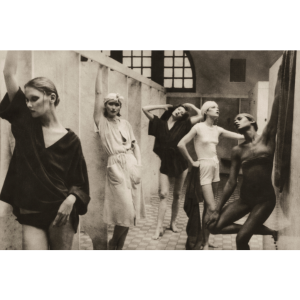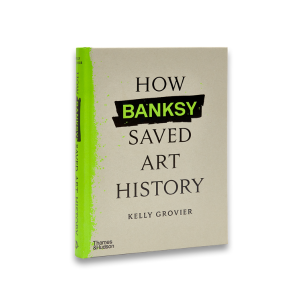Powerful Metaphors; The World of the Female Surrealist
By Jo Phillips
For some, looking at a surrealist painting may raise more questions than answers. This world of the human unconscious is characterized by the placement of strange objects in foreign environments. What does it all mean? What are these strange objects and what are their meaning? Why is an apple covering a man’s head or even a mythical creature wandering around the page? The Artic movement of Surrealism is a twentieth-century literary, philosophical and artistic movement that explored the workings of the mind, championing the irrational, the poetic and the revolutionary. Like much in the modern art world, it started as a reaction to the art before it and the current state of the world the artists were living in at that point in history Alongside the changing attitude to the ‘self’
Image on left Dragoness Yellow, courtesy of the Leonora Carrington Council and rossogranada.
At the turn of the 20th century a new modern world was born, it brought much in the way of change due to technology machinery and new thinking.
A revolutionary period for the world, that saw a massive shift in every part of the lives of most people. Think of the birth of cars, railways, aeroplanes, and radio broadcasting and that’s just to start with. Then of course there was the 1st World War that changed even the boundaries of countries making major shifts in the power balance of the world.
One big change that came along with all of these physical things, dealt far more with emotive and intellectual pursuits. The birth of psychotherapy. Modern, scientific psychology is often dated from 1879 with the opening of the first psychological clinic, but it really began to take hold after World War Two when Psychotherapy began with the practice of psychoanalysis, the “talking cure” developed by Sigmund Freud.
Sigmund Freud, by Max Halberstadt.
This practice involved the patient expressing their thoughts, including free associations, fantasies, and dreams, from which the analyst would explore the unconscious conflicts causing the patient’s symptoms and character problems.
This fundamentally and radically influenced morality and the idea of who a person is. Unsurprising such changes in the mentality of Western society found expression in new creative outlets
The artist within this creative exploration referred to their practice with the name surrealism, coined by the poet Guillaume Apollinaire several years earlier.
“I am not interested in reality in art, but in imagination. After all, reality can be found in any photograph.” –
Salvador Dali
The Surrealists sought to harness the creativity of the unconscious mind, drawing heavily on Sigmund Freud’s theories of psychoanalysis. Surrealist artworks often featured dreamlike scenarios with abstract, sometimes disturbing imagery as a method of pure automatic expression.
Creativity is a journey into the deepest labyrinth of the subconscious, where colours and shapes turn into the language of the soul.”
Max Ernst
The Surrealist Manifesto, published in 1924, was written by literati Louis Aragon, Philippe Soupault and André Breton, who were intrigued by the expression of the deepest human thoughts and their exploration via the work of Sigmund Freud.
It is interesting to note that Freud was not enamoured by the surrealist love for him, far more an admirer of the Old Masters and had little time for the new and avant-garde movements. However, he meet both Breton and Dali and was a little taken by Dali’s ideas.
The biggest names often quoted in the surrealist works are of course the names already mentioned Like Dali, Breton, Apollinaire, Magritte, Max Ernst and Miro. less is heard of female contributors like Dora Maar and British-born Leonora Carrington. Now if anyone lived the perfect Freudian Surrealist life Leonora Carrington was it. You don’t need to look closely at her work to know it was symbolic if not metaphoric of her troubled life.
Leonora Carrington by an unknown artist
Mary Leonora Carrington was born on 6 April 1917 at Westwood House in Lancashire, to a wealthy and traditional family. By the time she was a nineteen-year-old art student in London, beautiful and unapologetically rebellious, her family sent her to Florence, where she attended Mrs Penrose’s Academy of Art. She first encountered Surrealist Art when she saw a work by Paul Éluard.
Although she did attend art school her family didn’t encourage her creativity and were far more interested in getting her married off and showing her off at the yearly debutant ‘season’. However, she did continue to produce work and British Surrealist poet Edward James became her patron.
In 1936 Carrington saw the work of the German surrealist Max Ernst at the International Surrealist Exhibition in London and was attracted to the Surrealist artist before she even met him.
“Habakuk” by Max Ernst, Grabbeplatz vor der Kunsthalle in Düsseldorf
In 1937 a clandestine meeting between the two happened at a party held in London. The artists’ love affair started and they returned together to Paris, where Ernst separated from his wife and the new lovers settled in the South of France.
Relief patterns created by Max Ernst during his stay during the Second World War with Leonora Carrington in Saint Martin d’Ardèche
The lovers may well have been deeply happy, but Carrington choosing to live in this way and having left the trajectory expected by her parents now found herself almost completely cut off from her family leaving her rather vulnerable.
However, the two artists collaborated and supported each other’s artistic development. The two artists created sculptures of guardian animals to decorate their home and Carrington and Ernst painted portraits of each other.
But tragedy soon struck. The outbreak of World War II brought problems for Ernst, who was German, and was arrested by the French authorities for being a “hostile alien”. Discharged a few weeks later with the help of other artists once the nazi’ arrived in France he was again interred because his art was considered degenerate. In the end with the help of the Arts Patron Peggy Guggenheim, he managed to get to the USA.
But what of Carrington? She had a nervous breakdown so devastated by the initial interment of Ersnt she agreed to go to Spain with a friend. She and Ernst were never to be lovers again. Carrington stayed with family friends in Madrid until her paralyzing anxiety and delusions led to a psychotic break and she was admitted into an asylum.
The treatment here was horrific, cruel and included shock therapy. At this point, her parents decided to step in and send her to a sanatorium in South Africa. But this was Leonora and so on her journey there via Portugal, where she met with the poet and Mexican Ambassador Renato Leduc a poet and the Mexican Ambassador.
Image on left on wall , Silla Daghda(The Chair Daghda), 2011Lithograph signed, 60 x 80 cmCourtesy of the Leonora Carrington Council and rossogranada, image on right on well And Then we saw the Daughter of the Minotaur,2011Lithograph signed, 80 x 61 cmCourtesy of the Leonora Carrington Council and rossogranada. Statue, Daughter of the Minotaur, 2010 Bronze sculpture, 82 x 38 x 55 cm courtesy of the Leonora Carrington Council and rossograna. All artworks Leonora Carrington
And so the next chapter in the turbulent life started. A marriage of convenience was agreed so that she would be accorded the immunity given to a diplomat’s wife. After spending a year in New York, Leduc and Carrington went to Mexico where Leonora Carrington made her final home and where she spent the rest of her life. Happily, she did marry for love again sometime later to Emerico Weisz (nicknamed “Chiki”), born in Hungary in 1911, a photographer and the darkroom manager for Robert Capa during the Spanish Civil War.
It was here that this bold female painter was to finally come into her own. With amazing connections to the other surrealists, she was able to aid another artist in Mexico and connections within these surrealist circles were influential in opening artistic doors that had long been closed to Mexican artists. After living in Mexico for seven years, Leonora Carrington held her first solo exhibition at the Galeria Clardecor.
Although Surrealism was seen as having grown from not just Dada, the movement directly before it, and on the writings of Lucien Freud Carrington claimed that was not the case with her.
Leonora Carrington Untitled, 1979 Wool tapestry signed 197 x 260 cm courtesy of the Leonora Carrington Council and rossogranada
Whilst living in Mexico Carrington had an interest in animals, myth, and symbolism that became deeper when she started a relationship with the émigré Spanish artist Remedios Varo. The two studied Alchemy, Kabbalah, and the post-classic Mayan mystical writings Popol Vuh.
Her work explored magical realism, alchemy and symbolism she also used autobiographical detail as the subjects of her paintings. Carrington was interested in presenting female sexuality as she experienced it, rather than as that of male surrealists’ characterization of female sexuality.
Carrington is credited with feminising surrealism. Her paintings and writing brought a woman’s perspective to what had otherwise been a largely male-dominated artistic movement. But her expansive works grew from more than just paintings.

Image on right on wall Nechmann,1974Lithograph signed, 65 x 50 cm Courtesy of the Leonora Carrington Council and rossogranada Image left on wall Menashie y Rabbi Mendl,1974Lithograph signed, 65 x 50 cm Courtesy of the Leonora Carrington Council and rossogranada both Leonora Carrington
A writer, designer of theatre sets, as well as a prolific sculptor, and even jeweller she not only brought her unique take on the surrealist movement but crossed boundaries to an unprecedented level of mastery and freedom within her own painting.
Over the years since her death, her work has been revalued in terms of the boundaries she crossed and the depth of the work she made over her lifetime. In May 2024 her work Les Distractions de Dagobert was widely recognised as the defining masterpiece of Carrington’s career, showcasing rich surreal imagery and luminous colour on a large scale was sold for £22.5 million at Sotheby’s auction house in New York. At the time, this was a record amount paid for a work by a British-born female artist
Ultimately all the Surrealists used theories and methods to explore their own subconscious desires, fears, traumas and conflicts. These surreal images, metaphors for their decay fears and desires. Think of the apple that covers the face of a suited man, suggests the lack of freedom of the working man.
“Surrealism is the door to a world where fantasy is freed and dreams become visual poetry.”
André Breton
It may never have been considered ladylike to be a rebel but if that is what is inside you it’s hard to be anything but yourself. And maybe more than Freud, dreams magical realism, alchemy and symbolism were not what drove this remarkable artist, but her inner tale, her picture her own story played out in paint, wood, ceramic and paper
But as with most great artists before and after her, great creators are their work because they must give everything from their body mind spirit and soul to truly make great art. That, however, does through up another question (not to be answered here) can we separate the art from the artist?
Leonora Carrington: Rebel Visionary is made possible with the collaboration of the Leonora Carrington Council in Mexico and rossogranada. 12 July to 26 October 2024at Newlands House Gallery
If you enjoy reading Powerful Metaphors; The World of the Female Surrealist then why to read Opening Up The Soundscape here
.Cent Magazine Be Inspired; Get Involved










